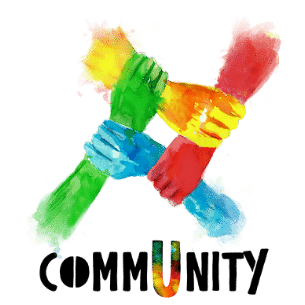Methodologies
Design Thinking Method
The Design Thinking Method is a research methodology and non-linear, iterative approach and process that teams use to understand users, challenge assumptions, redefine problems and create innovative solutions to prototype and test. Involving five phases —Empathise, Define, Ideate, Prototype and Test—, it is the most beneficial method to tackle “wicked problems” that are ill-defined, have no one-size-fits-all solution, or are unknown.
With its human-centred approach, the Design Thinking Method has also proven to be an excellent tool for its practitioners to acquire the skills and competencies such as creativity and critical thinking, handling uncertainty, metacognition (thinking about thinking), lifelong learning, understanding other cultures, and social and emotional skills such as empathy (OECD, 2019).
Finally, the Design Thinking Method also has the potential to coach its users on the learning competencies any future inhabitant needs to learn to thrive in a transforming world (Hannon, 2017). Lifelong learners will have to be able to embrace networked and entrepreneurial learning (Lackéus, 2015), hone their creative abilities, which is to think in new and unimagined ways (Moberg et al., 2014), activate their intuitive learning, which refers to finding opportunities through seeing relationships between facts (Rae&Wang, 2015), favour the unknown (Perkins, 2016), and excel at asking questions rather than answers (Pink, 2013), but most of all, allow empathy as a learning path (Hannon, 2017). Design Thinking takes you through every aspect of this learning process necessitated by both the present and future.
Design Thinking and the CommUnity Project
With the aim of preventing radicalisation among young people through the development and organization of artistic and cultural activities to strengthen local communities, the CommUnity Project adopted the Design Thinking Method to define, create and test new tools and methodologies to address this social problem.
Indeed, radicalisation is undoubtedly a ‘wicked problem’. Information about radicalisation is fragmented. There are many conflicting views on radicalisation, its motives and causes. Stakeholders do not share common views, perspectives, and values on this societal ill. Furthermore, there is no universal agreement or common understanding on the terminology used to describe, discuss, and reflect all aspects of radicalisation.
The CommUnity Project sought to develop effective responses and tools to prevent and counter all forms of radicalisation in priority areas, using the Design Thinking Method’s “Empathise-Define-Ideate-Prototype-Test” iterative cycle of continuous adjustment, modification, finetuning, and improvement (CommUnity application, 2019). As expected, it is ineffective and impossible to replicate solutions from one local context to another since what is impactful in one community may not be effective in another. Hence, the CommUnity Project has engaged with different arts-based communities with their own unique problem definitions for their specific target groups: youth, women, men, mothers, fathers, community builders and through different arts activities: film, literature, painting, graffiti, and music.
Departing from the premise that art is a universal language, provides an ideal and accessible way to fight prejudices, stimulates self-identification and empathy, eliminates fear of the other, and ends hostilities, while the creation of art encourages self-expression, self-reflection, identity building, empowerment and a sense of temporary transcendence, the CommUnity Project has shortened the distances between people from different religions, cultures, nationalities, ethnic groups, genders and sexualities, and has brought communities closer together and stimulated a sense of purpose.
Throughout the CommUnity Project, many successful examples (particularly at the local level) demonstrated that arts projects can improve struggling communities and strengthen a sense of belonging. Indeed, studies have shown that cultural projects play a fundamental role in reviving and boosting the prospects of the poor, minorities and other disadvantaged communities (Tom Borrup, The Creative Community Builder’s Handbook: How to transform communities using local assets, Arts and Culture, 2006).
According to Tom Borrup (2006), a leader and innovator in non-profit cultural and community development work, “Participation in cultural activities connects people to each other and to their community institutions, providing pathways to other forms of participations. Thus, arts and culture can create opportunities for political expression, community dialogue, shared cultural experiences and civic work.”
With this innovative combination of the Design Thinking Method and the application of a creative approach to the “wicked problem” of radicalisation among young people, the CommUnity Project strategy has not only proven successful in empowering young people by allowing them to develop artistic skills, co-creating a sense of belonging within their local communities, finding and developing innovative tools and activities to discuss, address and reflect on radicalisation and the importance of diversity, inclusivity, democracy, and human rights, it has also transformed young people across Europe into our allies in preventing radicalisation.
Interested in our ambitious and innovative approach and want to learn more?
Check out the Methodological Guide for an in-depth description of how the Design Thinking Method was applied throughout the CommUnity Project! 👉 https://www.thecommunityproject.eu/community-methodological-guide/
